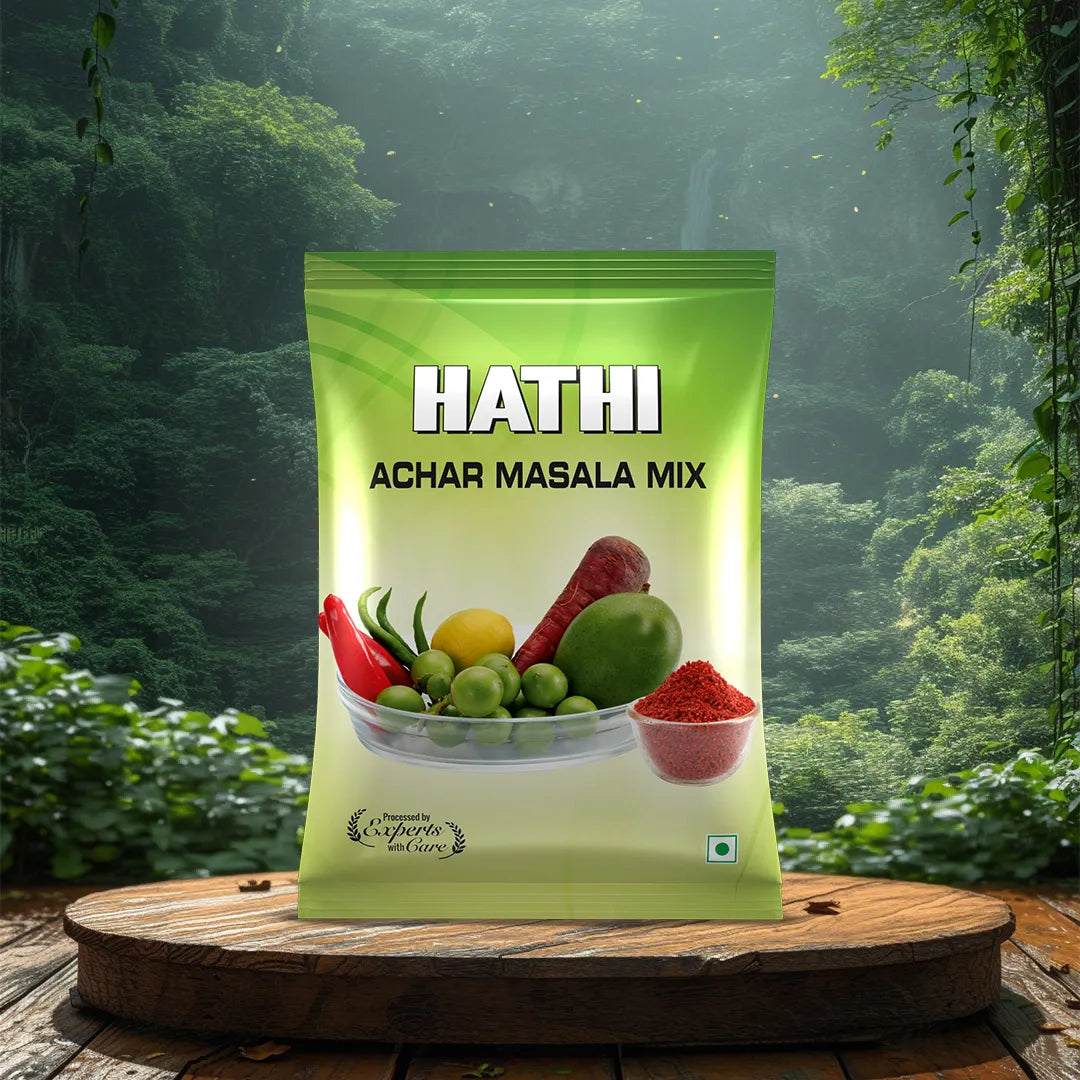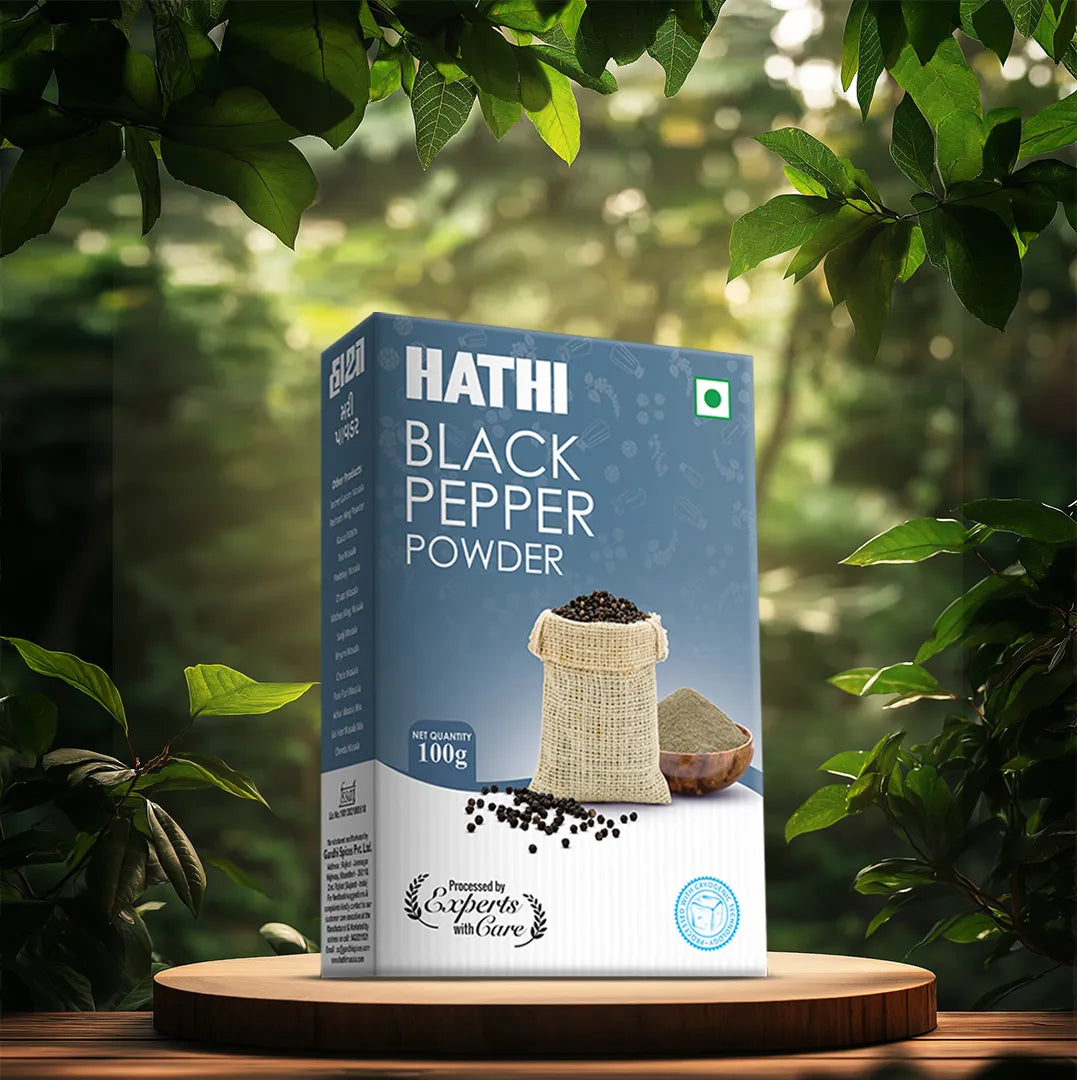If you love adding fresh flavours to your meals, growing your own spices is a great idea. Homegrown spices are not only fresher, but they are also more affordable and easily accessible. Whether you live in a spacious home or a small apartment, you can still grow spices with ease. This guide will help beginners understand how to start growing spices at home, even with limited space.
Why Grow Your Own Spices?
There are many reasons to start your own spice garden. Fresh herbs and spices add unmatched flavour to your dishes, and growing them at home ensures you always have them on hand. Plus, homegrown spices are free from chemicals and preservatives, making them a healthier option. Whether you prefer to grow them outdoors or create an indoor spice garden, you can control the quality and freshness of your ingredients.
Fresh herbs and spices add unmatched flavour to your dishes, and growing them at home ensures you always have them on hand. At Hathi Masala, we take pride in providing high-quality spice blends, and we believe in the power of fresh, homegrown ingredients. By growing your own spices, you can enjoy the same level of freshness that goes into our products, bringing unbeatable flavour and aroma to your meals.
What Do You Need to Start Growing Spices?
Starting a spice garden doesn’t require a large investment or fancy equipment. Here’s a simple list of what you’ll need to begin:
- Containers: If you don’t have space for a garden bed, container gardening is perfect. Choose pots with good drainage to avoid water logging your plants.
- Soil: Use well-draining soil. Spices often thrive in soil that is light and aerated.
- Sunlight: Spices generally need around 6 hours of sunlight daily. A sunny window or balcony is ideal for an indoor spice garden.
- Water: Most spices prefer moderate watering, so avoid overwatering them.
For more detailed advice on container gardening, check out this article from the Royal Horticultural Society.
Now that you have the basic tools, let’s dive into how to grow spices at home.
Best Spices to Grow at Home
Some spices are easier to grow than others, especially for beginners. Let’s look at a few spices that you can start growing with minimal effort:
1.Coriander (Cilantro)

Coriander is one of the best spices to grow at home. It is quick-growing and can be harvested multiple times. You can grow it both indoors and outdoors. Start by planting coriander seeds in a pot. It prefers full sun but can tolerate some shade. Keep the soil moist, and within a few weeks, you'll have fresh coriander leaves to use in your cooking. Fresh herbs like coriander can have a variety of health benefits. Once your coriander is ready to harvest, you can also explore the convenience of using Hathi Coriander Powder for your dishes.
Read more about it in this WebMD article on the benefits of coriander.
2. Turmeric

Turmeric is an excellent choice for container gardening. This vibrant yellow spice grows from rhizomes, which are similar to ginger roots. Plant the rhizomes in large pots with well-draining soil. Keep the plant in a warm, sunny spot and water it regularly. After about 8-10 months, you can harvest the rhizomes and dry them for home use. Alternatively, if you're looking to add turmeric to your spice collection, you can explore Hathi Turmeric Powder as a convenient option. We offers highest quality turmeric options:
3. Basil

Basil is another great herb for beginners. It grows well in containers and requires plenty of sunlight. Plant basil seeds in small pots and keep them on a windowsill or balcony. Water the plant when the top layer of soil feels dry. Basil leaves are perfect for seasoning a variety of dishes, and they’re best used fresh.
Check out this article for more info about Basil.
4. Mint

Mint is a hardy herb that grows quickly. It thrives in partial shade and doesn’t need much maintenance, making it ideal for beginners. Mint spreads rapidly, so it’s best to grow it in a container. Water the plant regularly and keep it in a cool spot. Mint can be used fresh in teas, salads, and sauces.
5.Chilli Peppers

If you like to add a bit of heat to your food, chilli peppers are perfect for your indoor spice garden. Chilli plants love sunlight, so make sure they get plenty of it. Sow the seeds in pots and water them regularly. Once they grow, you’ll have a steady supply of fresh chillies for your recipes.
Check out this article by Curly Tales to learn about chilis varieties.
Growing Spices Indoors vs Outdoors
You can grow spices either indoors or outdoors, depending on your available space. Let’s look at the pros and cons of both options.
Indoor Spice Garden
An indoor spice garden is ideal for urban gardening, especially if you don’t have outdoor space. Here are some advantages and tips for growing spices indoors:
- Control over climate: Indoors, you can regulate temperature and humidity to suit the needs of your plants.
- Protection from pests: Indoor plants are less likely to be attacked by insects or animals.
- Convenient: Having an indoor spice garden means you can easily pick fresh spices while cooking.
Tips for growing spices indoors:
- Place your pots near a window that gets plenty of sunlight.
- Use pots with good drainage to avoid soggy soil.
- ater your plants regularly but ensure the soil doesn’t stay too wet.
Outdoor Spice Garden
If you have access to outdoor space, you can grow a larger variety of spices. An outdoor garden gives plants more room to spread and thrive. Here are the benefits of an outdoor spice garden:
- More sunlight: Outdoor gardens provide natural sunlight, which is essential for many spices.
- More space: Growing outdoors allows you to plant more varieties of spices.
If you choose to grow your spices outdoors, ensure that the soil drains well and that the plants receive enough water, especially during dry periods. Outdoor gardens may also attract pests, so consider using natural pest control methods to protect your plants.
How to Grow Spices at Home: A Step-by-Step Guide
- Choose Your Containers: Select pots with drainage holes. If you're growing indoors, ensure the containers fit comfortably in the space available.
- Prepare the Soil: Use well-draining potting soil. You can mix in compost or organic fertilisers to give the soil extra nutrients.
- Plant Your Seeds or Rhizomes: Depending on the spice, you’ll either be planting seeds or rhizomes (such as ginger or turmeric). Make sure to plant them at the right depth for optimal growth. Here’s a guide for the spices mentioned earlier:
- Coriander (Cilantro): Plant coriander seeds about 1/4 inch (0.5 cm) deep. Cover lightly with soil and keep it moist until germination.
- Turmeric: Plant turmeric rhizomes about 2 inches (5 cm) deep in the soil. Make sure the buds on the rhizome are facing upwards.
- Basil: Basil seeds should be planted at a depth of 1/4 inch (0.5 cm). Cover the seeds lightly with soil and keep them in a warm, sunny spot.
- Mint: Mint can be grown from seeds or cuttings. If planting seeds, sow them at a shallow depth of 1/8 inch (0.3 cm), as they need light to germinate. If using cuttings, plant them just deep enough to cover the roots.
- Chilli Peppers: Sow chilli pepper seeds about 1/4 inch (0.5 cm) deep. Keep the soil warm and moist for successful germination.
- Water the Plants: Water the soil until it’s moist but not soaked. Overwatering can lead to root rot, so be cautious.
- Place in Sunlight: Ensure your plants get at least 6 hours of sunlight. For indoor plants, place them near a bright window or balcony.
- Care for the Plants: Water them regularly and prune them when necessary to encourage healthy growth. If growing outdoors, check for pests and use natural remedies to keep them away.
Container Gardening Tips
For those living in apartments or homes with limited space, container gardening is a great option. Here are a few tips to help you succeed with container gardening:
- Choose the right container size: Ensure the pots are large enough for the roots to grow comfortably. Small pots may restrict plant growth.
- Use high-quality soil: Container plants rely on the nutrients in the soil. Using good-quality potting soil with added compost or organic fertilizers will help your spices thrive.
- Rotate your plants: If you're growing spices indoors, rotate the pots every few days to ensure all sides of the plant get enough sunlight.
Harvesting Your Homegrown Spices
Once your spices have grown, it's important to harvest them at the right time for the best flavour and quality. Each spice has different harvesting methods:
- Coriander (Cilantro): Harvest the leaves once the plant reaches 6 inches (15 cm) in height, preferably in the morning for peak flavour. Snip the outer leaves and let the plant continue growing. If harvesting for seeds, wait until they turn brown, then dry them before storing.
- Basil: Harvest when the plant has 6-8 leaves. Pinch off the top leaves to encourage bushier growth and prevent flowering, which can make the leaves bitter. Basil can be used fresh or dried and stored for several months.
- Mint: Pick the leaves when the plant reaches 8-10 inches (20-25 cm). Regularly harvesting the top leaves prevents them from becoming woody. Dry mint leaves and store them for up to a year.
- Turmeric: Harvest after 8-10 months when the leaves turn yellow. Carefully dig up the rhizomes, boil, dry, and grind them into powder. Store in a cool, dark place.
- Chilli Peppers: Harvest when they reach their mature colour, often red. For milder heat, pick green chillies. Dry or store chillies for later use.
Conclusion
Growing your own spices is a rewarding and practical hobby. Whether you start an indoor spice garden or try container gardening outdoors, you’ll enjoy fresh, flavourful spices at your fingertips. With a bit of care and attention, you can grow a wide range of spices at home, from coriander and basil to turmeric and chilli peppers. Plus, homegrown spices are healthier, tastier, and more sustainable than store-bought options. And when you want to expand your spice cabinet, Hathi Masala offers a wide selection of high-quality spices to complement your own fresh harvest.
So, grab your pots, seeds, and soil, and start growing your very own spice garden today!



















